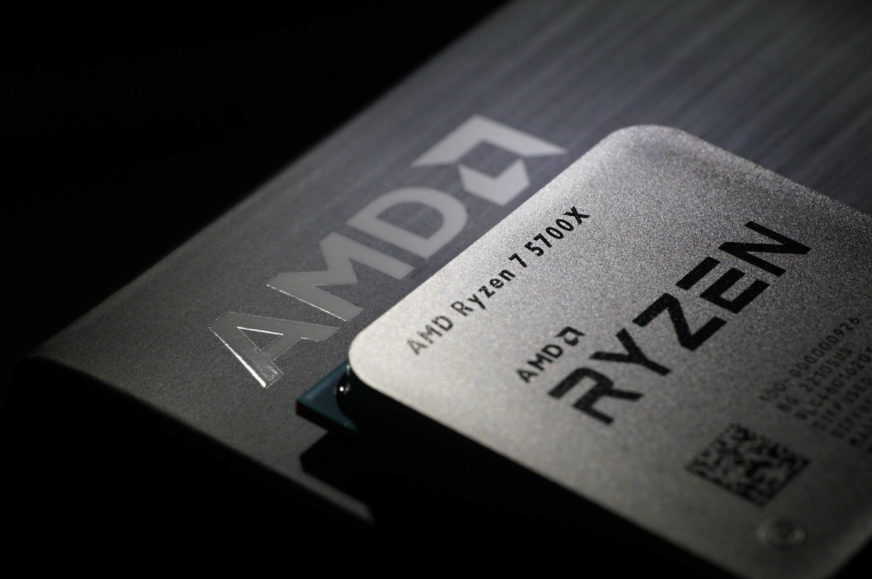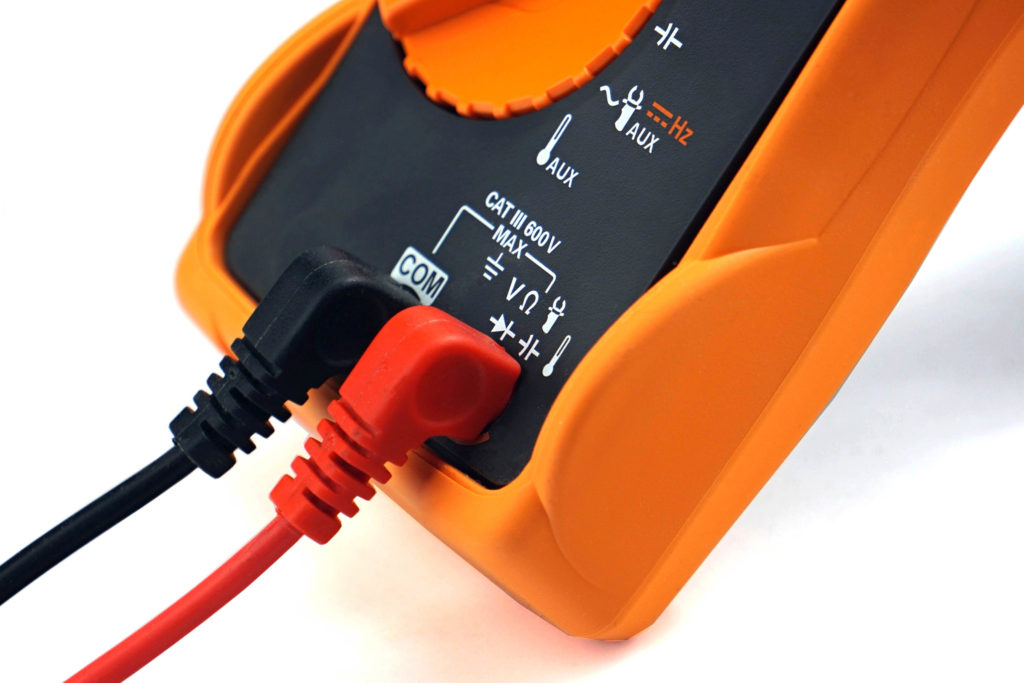Methodology: how we measure power draw
At the eleventh hour, but still. The long-awaited Ryzen 7 5700X is here. However, we won’t be writing about the successor to the Ryzen 7 3700X as a significantly cheaper alternative to the Ryzen 7 5800X. The new octa-core Ryzen 7 5700X is primarily more economical compared to the higher-end model. Its power draw is just half in some tasks, which means that temperatures are also significantly lower.
Methodology: how we measure power draw
Measuring CPU power consumption is relatively simple, much easier than with graphics cards. All power goes through one or two EPS cables. We also use two to increase the cross-section, which is suitable for high performance AMD processors up to sTR(X)4 or for Intel HEDT, and in fact almost for mainstream processors as well. We have Prova 15 current probes to measure current directly on the wires. This is a much more accurate and reliable way of measuring than relying on internal sensors.
The only limitation of our current probes may be when testing the most powerful processors. These already exceed the maximum range of 30 A, at which high accuracy is guaranteed. For most processors, the range is optimal (even for measuring a lower load, when the probes can be switched to a lower and more accurate range of 4 A), but we will test models with power consumption over 360 W on our own device, a prototype of which we have already built. Its measuring range will no longer be limiting, but for the time being we will be using the Prova probes in the near future.
The probes are properly set to zero and connected to a UNI-T UT71E multimeter before each measurement. It records samples of current values during the tests via the IR-USB interface and writes them in a table at one-second intervals. We can then create bar graphs with power consumption patterns. But we always write average values in bar graphs. Measurements take place in various load modes. The lowest represents an idle Windows 10 desktop. This measurement takes place on a system that had been idle for quite some time.
Audio encoding (FLAC) represents a higher load, but processors use only one core or one thread for this. Higher loads, where more cores are involved, are games. We test power consumption in F1 2020, Shadow of the Tomb Raider and Total War Saga: Troy in 1920 × 1080 px. In this resolution, the power consumption is usually the highest or at least similar to that in lower or higher resolutions, where in most cases the CPU power draw rather decreases due to its lower utilization.
Like most motherboard manufacturers, we too ignore the time limit for “Tau”, after which the power consumption is to be reduced from the PL2 boost limit (when it exceeds the TDP) to the TDP/PL1 value, recommended by Intel, in our tests. This means that neither the power draw nor the clock speed after 56 seconds of higher load does not decrease and the performance is kept stable with just small fluctuations. We had been considering whether or not to respect the Tau. In the end, we decided not to because the vast majority of users won’t either, and therefore the results and comparisons would be relatively uninteresting. The solution would be to test with and without a power limit, but this is no longer possible due to time requirements. We will pay more attention to the behavior of PL2 in motherboard tests, where it makes more sense.
We always use motherboards with extremely robust, efficient VRM, so that the losses on MOSFETs distort the measured results as little as possible and the test setups are powered by a high-end 1200 W BeQuiet! Dark Power Pro 12 power supply. It is strong enough to supply every processor, even with a fully loaded GeForce RTX 3080, and at the same time achieves above-standard efficiency even at lower load. For a complete overview of test setup components, see Chapter 5 of this article.
- Contents
- AMD Ryzen 7 5700X in detail
- Methodology: performance tests
- Methodology: how we measure power draw
- Methodology: temperature and clock speed tests
- Test setup
- 3DMark
- Assassin’s Creed: Valhalla
- Borderlands 3
- Counter-Strike: GO
- Cyberpunk 2077
- DOOM Eternal
- F1 2020
- Metro Exodus
- Microsoft Flight Simulator
- Shadow of the Tomb Raider
- Total War Saga: Troy
- Overall gaming performance
- Gaming performance per euro
- PCMark and Geekbench
- Web performance
- 3D rendering: Cinebench, Blender, ...
- Video 1/2: Adobe Premiere Pro
- Video 2/2: DaVinci Resolve Studio
- Graphics effects: Adobe After Effects
- Video encoding
- Audio encoding
- Broadcasting (OBS and Xsplit)
- Photos 1/2: Adobe Photoshop and Lightroom
- Photos 2/2: Affinity Photo, Topaz Labs AI Apps, ZPS X, ...
- (De)compression
- (De)cryption
- Numerical computing
- Simulations
- Memory and cache tests
- Processor power draw curve
- Average processor power draw
- Performance per watt
- Achieved CPU clock speed
- CPU temperature
- Conclusion












Nice review, especially the details in the Premiere Pro part.
However, there are some questionable results, namely the “4K H.264, 2× Forward Live Playback [avg. fps] – higher is better” and others, where the 5700X is last by a wide margin. Have you redone the tests (or ran similar tests) to see if this was just an outlier? It would have been nice to at least have a comment on such a weird result…
Thanks for your comment. The explanation is in the text of the final chapter, and I also explain this behavior in the Ryzen 5 5600 test, which performs better, but is still the second processor from the bottom in the charts. The point is that 4K H264 live playback is a single-threaded task in Premiere Pro, but because of the utilization of the other cores by other application processes, the frequencies are only at the all-core boost level. These are pretty conservative for the Ryzen 7 5700X from today’s perspective (the 5600 is 300 MHz faster here, hence the higher fps), plus Zen 3 doesn’t handle 4K H.264 well overall, and better results are achieved with both 4K ProRes 222 and 4K RED.
Thanks for replying. I read the explanation at the end of the review, but “the 500 MHz difference” still didn’t seem to be enough of a reason for such a big difference. Something else must be at play here, though I am also not sure of what it may be.
why in total war troy 5600x shows more fps than 5700x? after all, this strategy loads the processor well and, according to the logic, the 16th nuclear one should have come out with a large margin from the 12th nuclear one !! ps: I myself am a fan of total war warhammer 1/2/3 and have a 5600x processor, but yesterday I ordered a new 5700x processor
The reason for this is apparently very simple. The 6 cores/12 threads of the R5 5600X processor do not represent a bottleneck for TWST, and higher clock speeds are decisive for higher performance. And those the R7 5700X achieves are lower.
Great review, really liking the detailed analysis. I saw a comment on reddit that linked to this review stating that if the 5800x was limited to 65w TDP, the performance efficiency might be similar to the 5700x. Have you thought about testing this out?
Thanks for your comment. Due to a lot of time pressure, we probably won’t be testing the R7 5800X with reduced power draw anymore. But if we see a similar situation with the Ryzen 7000 and something like the R7 6700(X) and R7 6800, we’ll definitely take a look at it. However, it’s good to note that such analyses require multiple CPU samples to operate outside of their specs. The fact that a single 5800X sample would be limited to 65W and the performance was higher than the R7 5700X@TDP/65W doesn’t mean anything relevant yet.
It’s similar to overclocking. Based on one sample, it is not possible to generalize that this or that frequency will be achieved at xyz W of power draw. You always have to evaluate it based on multiple samples of processors and sooner or later we will get to that and once we have more of them (those test samples) we will for sure look at the variance of the measured values across the samples as well.